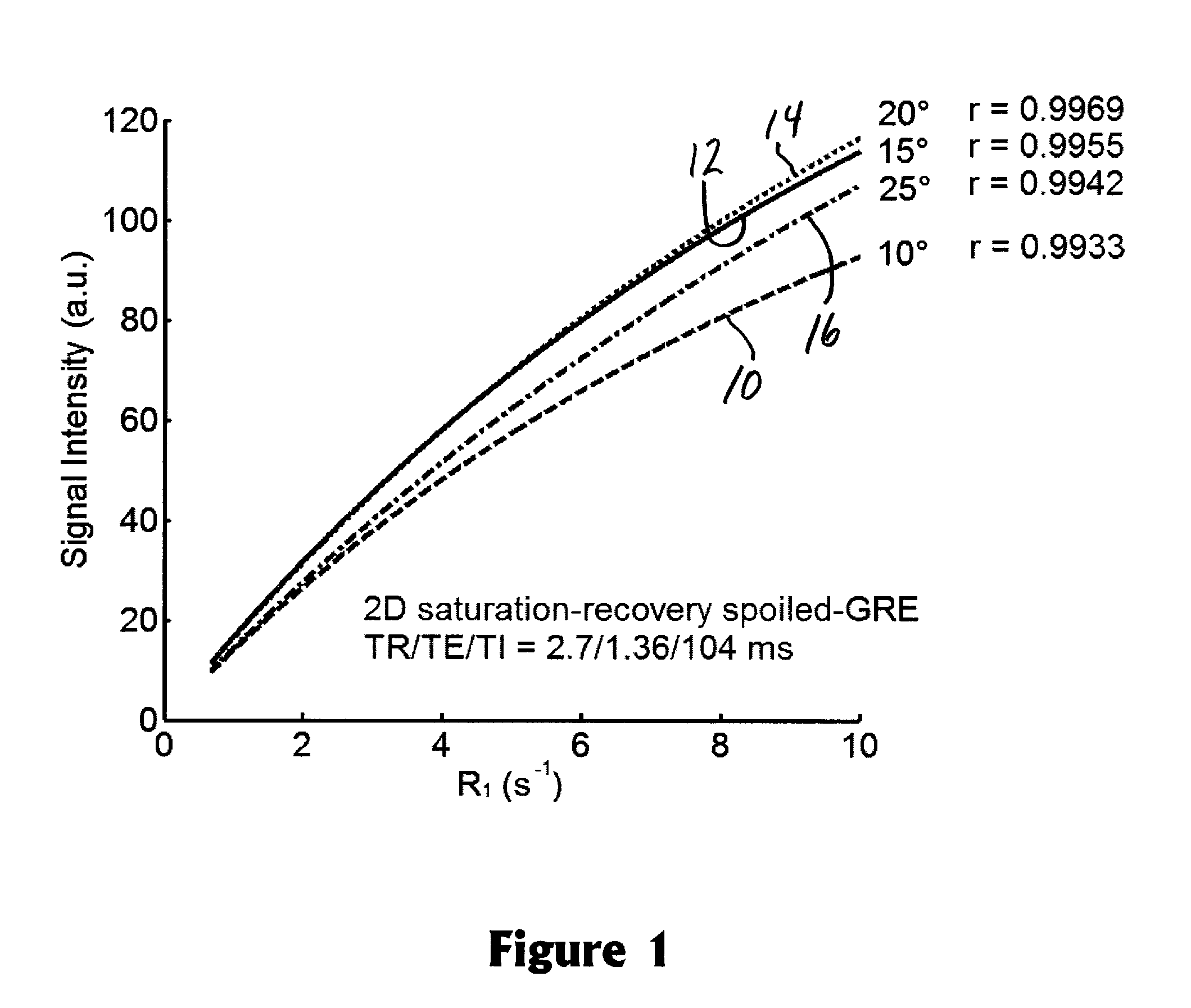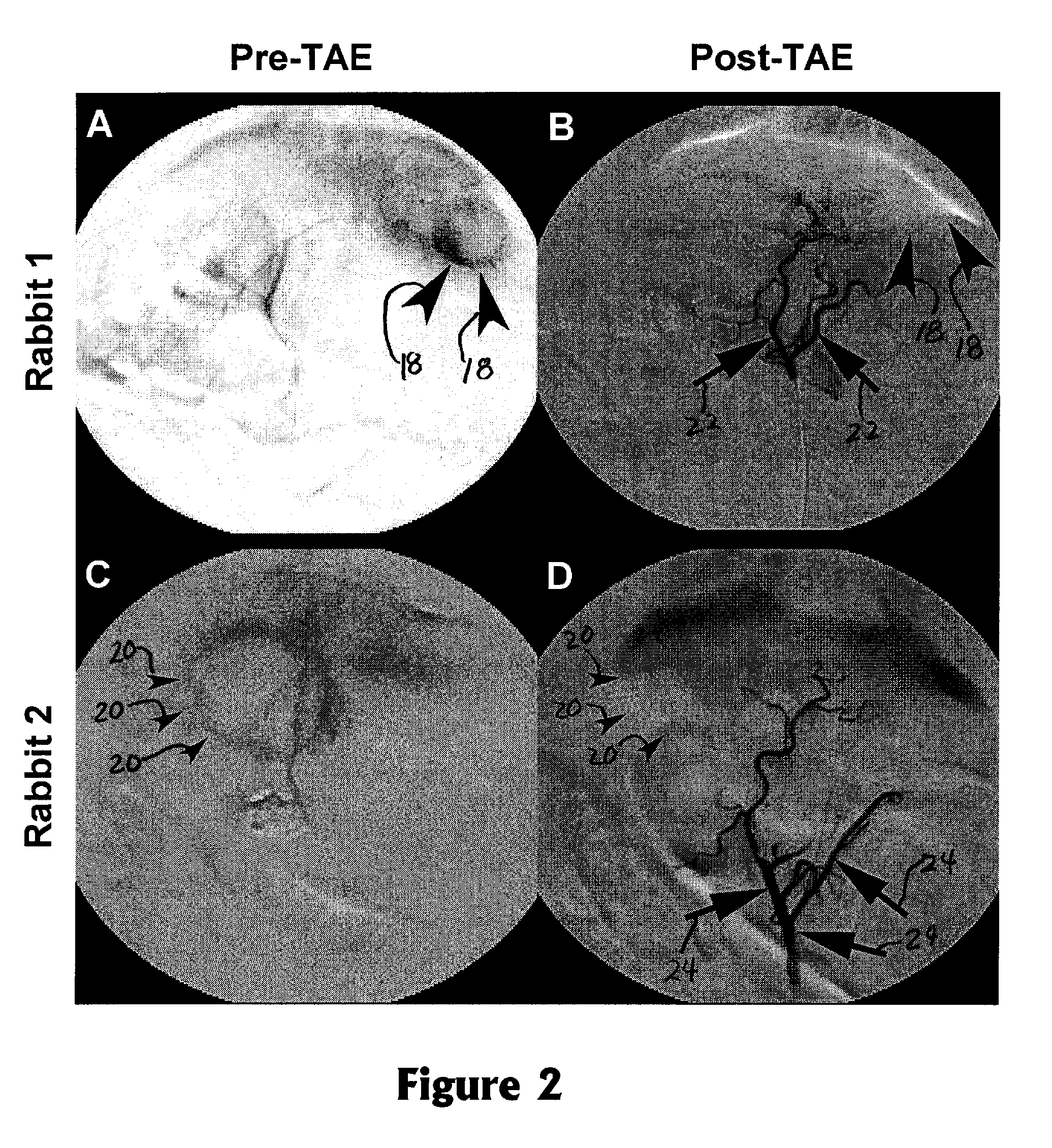Method for transcatheter intra-arterial perfusion magnetic resonance imaging
a magnetic resonance imaging and intra-arterial technology, applied in the field of biological tissues imaging, can solve the problems of increasing normal liver toxicity, inability to detect tumors, and inability to support optimal embolic endpoints of tae and tace procedures
- Summary
- Abstract
- Description
- Claims
- Application Information
AI Technical Summary
Benefits of technology
Problems solved by technology
Method used
Image
Examples
Embodiment Construction
[0020]The invention provides a method for monitoring embolization procedures and in particular to determining embolic endpoints for treatment of tumors. An arterial catheter is used to inject embolizing particles into the blood vessels feeding the tumor in a series of injections, and transcatheter intra-arterial perfusion magnetic resonance imaging (TRIP-MRI) is performed following each injection of embolic particles until measurements indicate that stasis is reached (or alternatively that some selected sub-stasis endpoint is achieved).
[0021]Perfusion refers to blood flow to tissues or an organ by way of the blood vessels. Perfusion MRI evaluates microscopic blood flow in the capillaries and venules using magnetic resonance image data (typically via IV injection of a contrast agent tracer). Transcatheter intra-arterial perfusion (TRIP) refers to the injection of the contrast agent being made through the lumen of a catheter inserted into the patient's artery.
[0022]The following tests...
PUM
 Login to View More
Login to View More Abstract
Description
Claims
Application Information
 Login to View More
Login to View More - R&D
- Intellectual Property
- Life Sciences
- Materials
- Tech Scout
- Unparalleled Data Quality
- Higher Quality Content
- 60% Fewer Hallucinations
Browse by: Latest US Patents, China's latest patents, Technical Efficacy Thesaurus, Application Domain, Technology Topic, Popular Technical Reports.
© 2025 PatSnap. All rights reserved.Legal|Privacy policy|Modern Slavery Act Transparency Statement|Sitemap|About US| Contact US: help@patsnap.com



